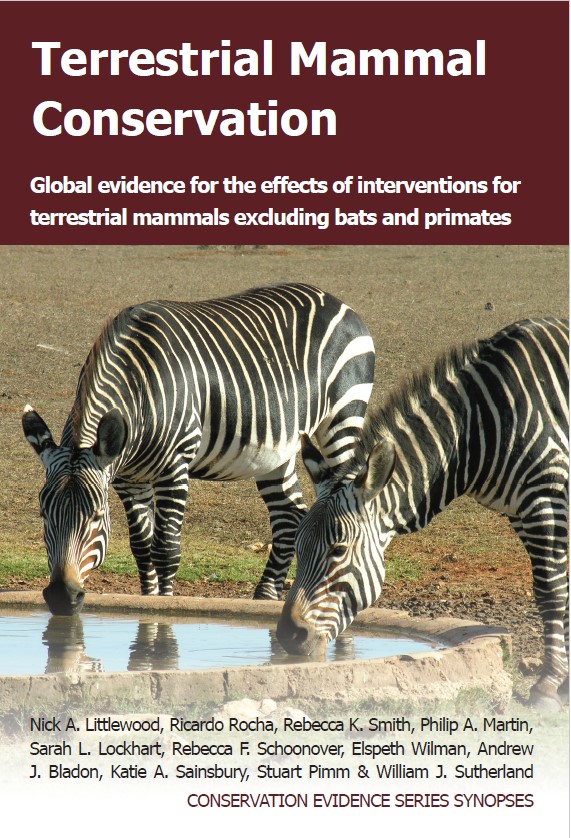Install ledges in culverts under roads/railways
-
Overall effectiveness category Likely to be beneficial
-
Number of studies: 3
View assessment score
Hide assessment score
How is the evidence assessed?
-
Effectiveness
60% -
Certainty
45% -
Harms
0%
Study locations
Supporting evidence from individual studies
A study in 2005–2006 at six road sites in Colorado, USA (Meaney et al. 2007) found that ledges in under-road culverts were used by nine of 12 small mammal species and ledges with access ramps were used more often than ledges without access ramps. Nine of 12 small mammal species that passed through the culverts used ledges (see original paper for details). Overall, a greater number of small mammal crossings were recorded along ledges with access ramps installed (total 443 crossings) than along those without (total 262 crossings). Temporary wooden ledges (15 cm wide) were installed in six concrete culverts (1–5 m wide, 1–1.3 m high, 9–48 m long) containing water. At each of the six culverts, access ramps were alternately attached or removed for 8–10 two-week periods in May–September 2005 and 2006. Motion-sensor cameras recorded small mammal movements through the culverts during a total of 16–20 weeks in May–September 2005 and 2006.
Study and other actions testedA replicated, controlled study in 2008–2009 of 32 culverts under roads in southern Portugal (Villalva et al. 2013) found that under-road culverts with ledges were used more by two mammal species, less by two species and to a similar extent by one species compared to culverts without ledges. Culverts with ledges were used more by stone marten Marte foina and genet Genetta genetta (data reported as model results). However, red fox Vulpes vulpes and badger Meles meles used culverts with ledges less than they used those without ledges (data reported as model results). The use of culverts by European otter Lutra lutra was not altered by the presence of ledges (data reported as model results). In January–March 2008, wooden ledges, 50 cm wide, were installed in 15 culverts and no ledges were installed in 17 culverts. Two video cameras with movement and heat sensors were placed at one entrance of each culvert. Marble dust was spread covering the width of the culvert for monitoring footprints. Each culvert was monitored for seven consecutive nights, in each season, for a year after ledge installation.
Study and other actions testedA before-and-after study in 2012–2013 at seven road sites in New York, USA (Kelley 2014) found that installing ledges within under-road culverts did not increase the number or diversity of small mammal species crossing through them, and only one of six species used ledges. Overall, a similar number of small mammal crossings of six species were recorded in the seven culverts before (total 55 crossings) and after (total 58 crossings) ledges were installed, although no statistical tests were carried out. Racoons Procyon lotor were the only species recorded using ledges and did so during 58% of crossings, but similar numbers were recorded before (total 47 crossings) and after (total 41 crossings) ledge installation. In May–June 2013, plywood ledges (14 cm wide) and access ramps were installed through seven under-road culverts (1–3 m wide, 1–2 m high, 6–25 m long) containing water. Cat food was placed on ledges and ramps once after installation. A motion-sensor camera monitored each of the seven culverts for 12 weeks in June–September before (2012) and after (2013) ledges were installed.
Study and other actions tested
Where has this evidence come from?
List of journals searched by synopsis
All the journals searched for all synopses
This Action forms part of the Action Synopsis:
Terrestrial Mammal Conservation
Terrestrial Mammal Conservation - Published 2020
Terrestrial Mammal Conservation





)_2023.JPG)














